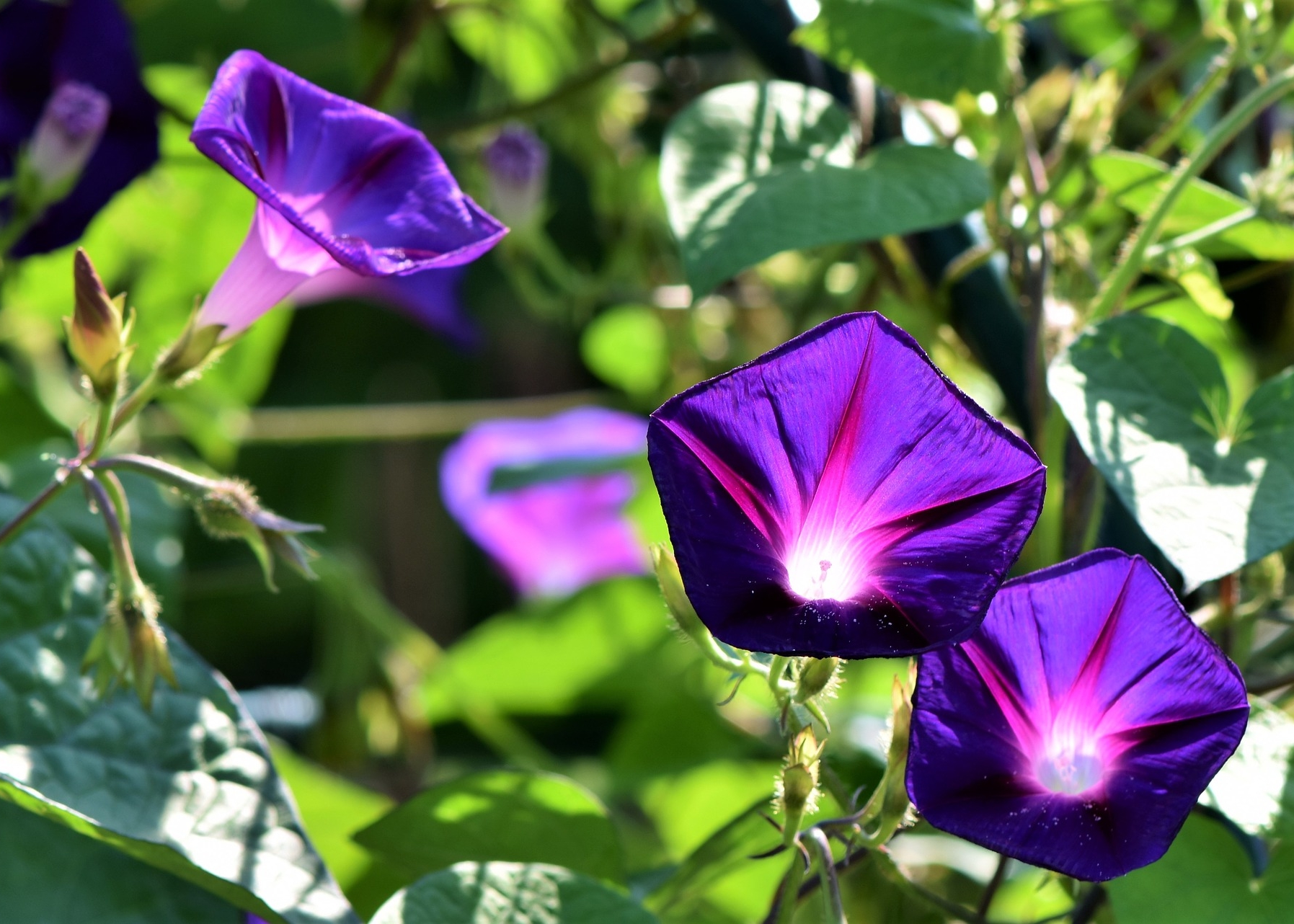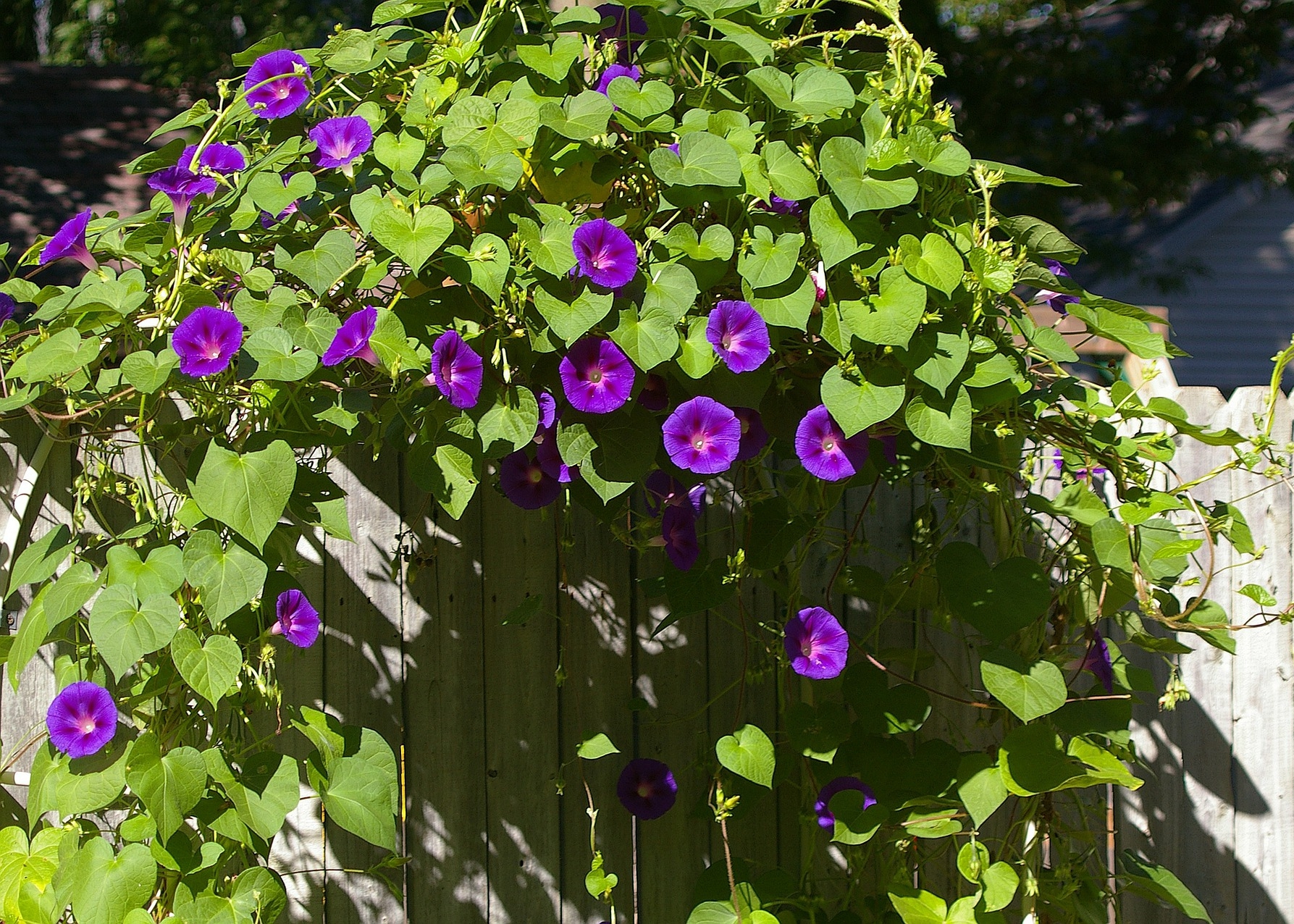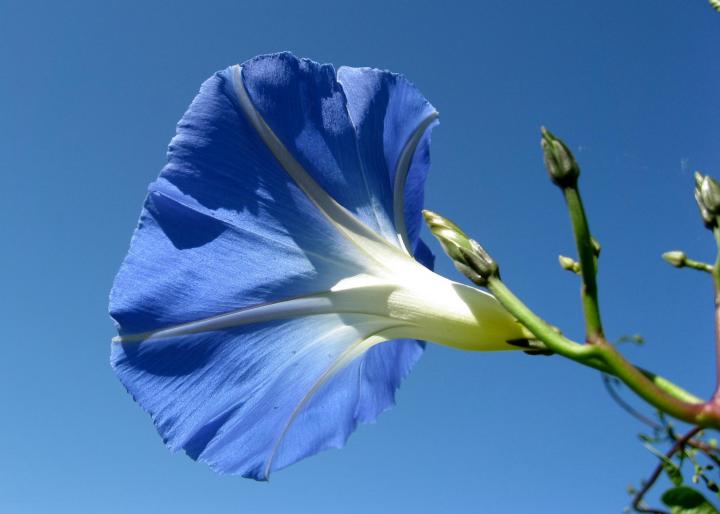A September birth flower, the morning glory has beautifully shaped blooms that unfurl in the sun and romantic tendrils that lend old-fashioned charm. Learn all about growing morning glories in your garden!
About Morning Glories
Morning glories are tender annuals, so they are sensitive to cool temperatures and late frosts. Note: Avoid the perennial Morning Glory species, Ipomoea aquatica and Ipomoea hederacea, which are classified as noxious weeds in several states.
Given their frost sensitivity, do not sow seeds too early and wait until the danger of spring frost is over. Once sown, morning glories bloom from early summer to the first frost of fall.
With slender stems and heart-shaped leaves, their trumpet-shaped flowers come in colors of pink, purple-blue, magenta, or white. Their fragrant, colorful flowers are not only attractive to our eyes but also beloved by butterflies and hummingbirds.
Train twining morning glory vines over a pergola or arch, or use as a dense groundcover. This drought-tolerant plant grows quickly—up to 10 feet in one season—and can self-seed fairly easily, too. Because of this, you’ll want to choose where you put this plant wisely! Otherwise, you may end up with more morning glories than you bargained for.
Warning: Morning glory seeds are poisonous, especially in large quantities. Keep them out of reach of children and pets. Learn more.
What’s the Difference Between Morning Glory and Bindweed?
The attractive annual morning glory (Ipomoea spp.) is often mistaken for its perennial cousin, field bindweed (Convolvulus arvensis), which is an aggressive, invasive weed native to Europe and Asia. Field bindweed—also called “perennial morning glory” or “creeping jenny”—grows similarly to annual morning glories, but sends out deep, deep roots, which make it very difficult to get rid of and allow it to overwinter in areas where cultivated morning glories could not.
To tell the difference between the plants, look closely at the leaves, flowers, and vines:
- Field bindweed leaves are typically smaller than those of annual morning glories. Morning glory leaves may be 2 inches or more across; bindweed leaves rarely exceed 2 inches. Bindweed leaves are also shaped more like an arrowhead than those of morning glories, which are heart shaped.
- Field bindweed flowers only occur in either pink or white, whereas annual morning glory flowers may be pink, white, magenta, blue, purple, or red, and are much larger than those of the bindweed.
- Morning glory vines are usually thicker than bindweed’s vines, and typically have small hairs.
In any case, if you come across a plant in your garden that resembles morning glory and you know you didn’t plant it, it’s best to err on the side of caution and treat it as a weed.













Comments